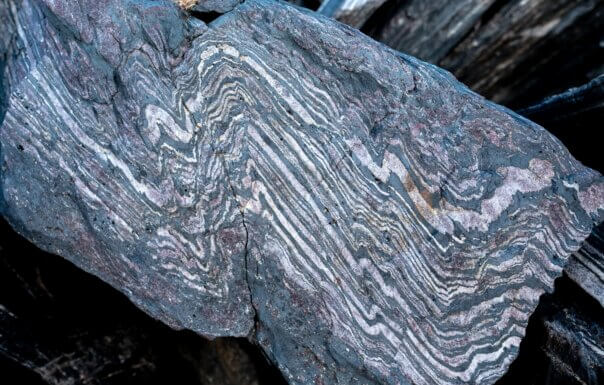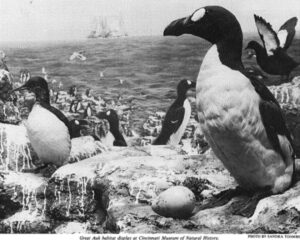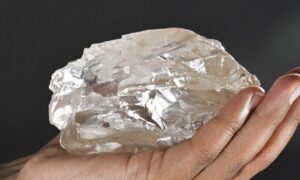You’d be hard-pressed to find any force of nature more consistent than Earth’s magnetic field. Emphasizing this, MIT and Oxford researchers recently found special rocks in Greenland that prove the planet’s magnetism has not substantially changed in almost 3.7 billion years.
What was happening on Earth 3.7 billion years ago? For one, life was beginning to emerge. It seems there could be a vital linkage between life and the steady presence of the planet’s protective magnetic shield.
“Our magnetic field protects us from harmful radiation from space,” Oxford University’s Claire Nichols, who co-authored a study on the findings, told MIT.
It also helps our oceans and atmosphere remain stable, she added.
The team’s paper appeared this week in the Journal of Geophysical Research. It describes how they sought information in Greenland’s Isua Supracrustal Belt, the site of some of the world’s oldest rocks.

The 35km-long Isua Supracrustal Belt borders the Greenland ice sheet. Photo: Claire Nichols
Rocks register the magnetic field
“You get helicoptered in, right up against the ice sheet,” Nichols told MIT. “Here, you have the world’s oldest rocks essentially, surrounded by this dramatic expression of the ice age. It’s a spectacular place.”
Finding these rocks was key to understanding ancient conditions. When minerals trapped in rocks respond to the Earth’s magnetic forces, they can create clues about the state of the magnetic field at a certain time — especially its strength and magnitude. However, most rocks undergo repeated superheating and cooling through plate tectonics or hydrothermal activity, which scrambles the minerals and destroys the magnetic codes they contain.
Rocks in the Isua Supracrustal Belt, on the other hand, have endured massive heat stress in their long existence. But ever since a 550˚C thermal event 3.7 billion years ago, they’ve remained roughly stable, so the banded iron inside has remained relatively intact.
The researchers think the rocks formed in primordial oceans. They also existed when Earth’s atmosphere didn’t contain oxygen, so soft metals like iron didn’t oxidize as easily. The Isua Supracrustal Belt rocks formed in alternating layers of silica and iron, as it precipitated out of the seawater above.
“They’re very beautiful, weird rocks that don’t look like anything that forms on Earth today,” said Benjamin Weiss of MIT.

Photo: Nichols
The team tested the magnetism inside the rocks by demagnetizing them in a lab. By re-magnetizing them in increments, they could then measure the strength of the original magnetic field by comparison.
The ancient rocks carried magnetization to at least 15 microtesla. That’s about half the strength of today’s magnetic field, enough for the team to deem it “similar.” It’s also similar in magnitude, Nichols told MIT.
Mysteries remain
Even though Earth’s magnetic envelope was cranking at similar power 3.7 billion years ago, it’s hard to tell how it did so. The solid iron inner core now anchors our magnetic field, but it didn’t solidify until about one billion years ago.
Keying in on the field’s primordial generator could provide insights about the origin of life not only here at home, but throughout the galaxy.
“It seems like evidence for whatever was generating a magnetic field back then was a different power source from what we have today,” Weiss told MIT. “And we care about Earth because there’s life here, but it’s also a touchstone for understanding other terrestrial planets. It suggests planets throughout the galaxy probably have lots of ways of powering a magnetic field.”






